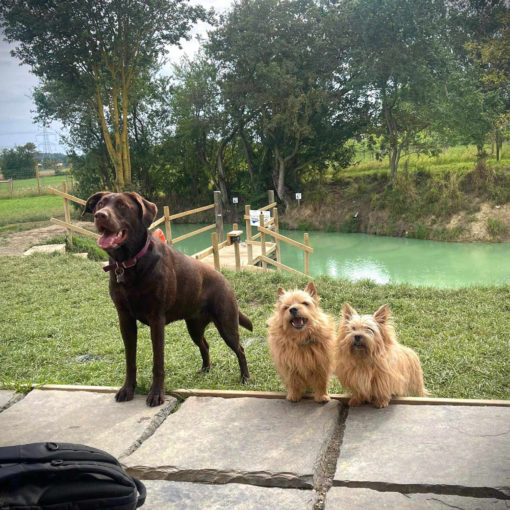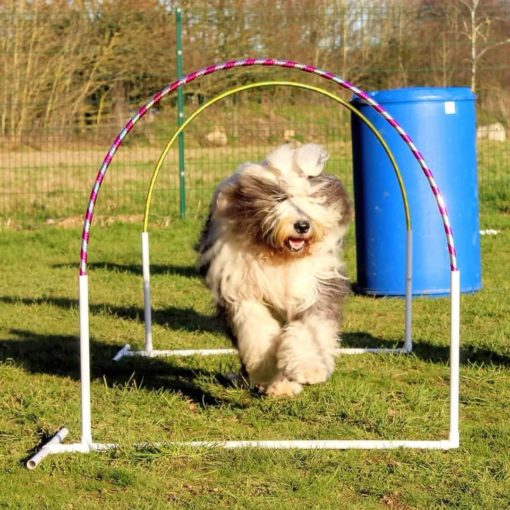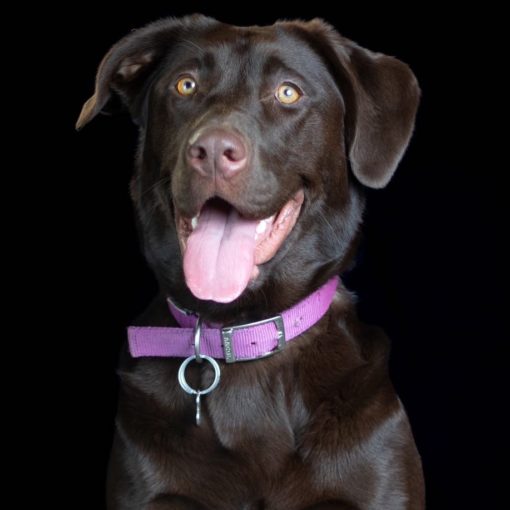Did you know that some of the positions our Dogs sleep in have names – including Shrimping for dogs who sleep with their legs pressed up against their stomach and chest!
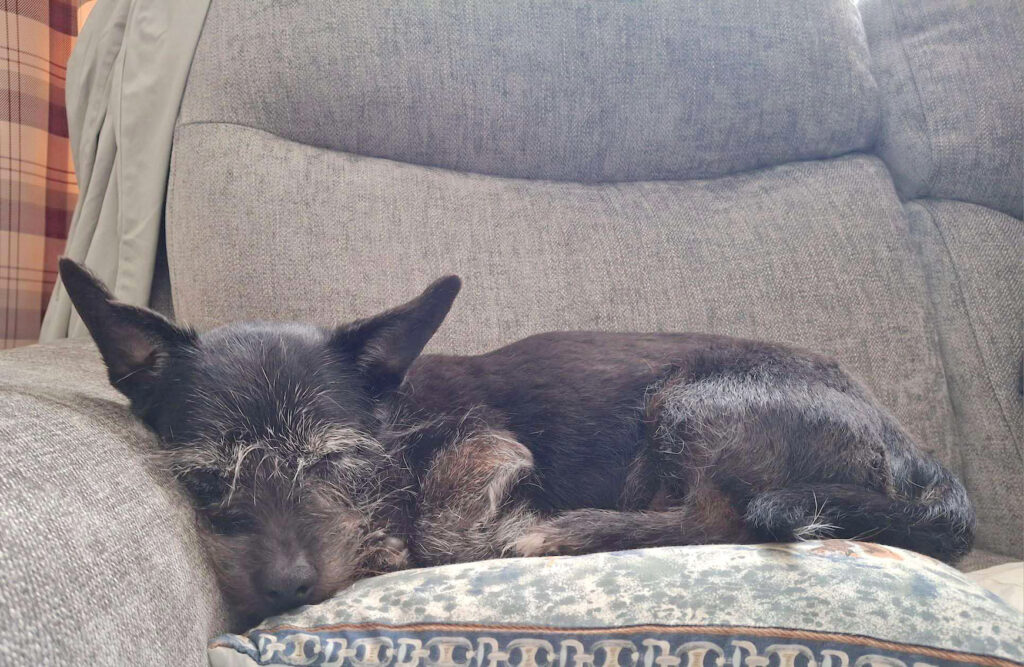
Dogs can change their more preferred sleeping positions throughout their lives;
Puppies:
Puppies, when very young, can fall asleep in a split second so they have some varied and often comical ways of sleeping. This can include part way through eating, in their toy box or in a pile with their littermates! As older puppies they are able to reach their beds but as their joints and bodies are still developing they are able to lay with legs facing different directions and make all kinds of shapes with their bodies!

Teenage Dogs:
Once dogs are adolescent at around 10 months to 2 years old (varies on size) their structure is starting to strengthen so their sleep positions often change too. They may also now have outgrown the bed they used as a puppy so have a new bed which can alter how a dog sleeps.
Sometimes a dog’s natural Breed traits affect how they sleep and these start showing when they are teenagers. Guarding breeds will often sleep in a more alert position such as head elevated rather than tucked into the chest. Herding breeds that have a strong instinct for looking after their family are less likely to sleep on their backs. They are more likely to sleep in a way that lets them spring into action! Terrier breeds don’t have as much of an instinctive way of sleeping. However they are very regularly seen sleeping curled up in a ball which helps with body heat – not needed during hotter months!
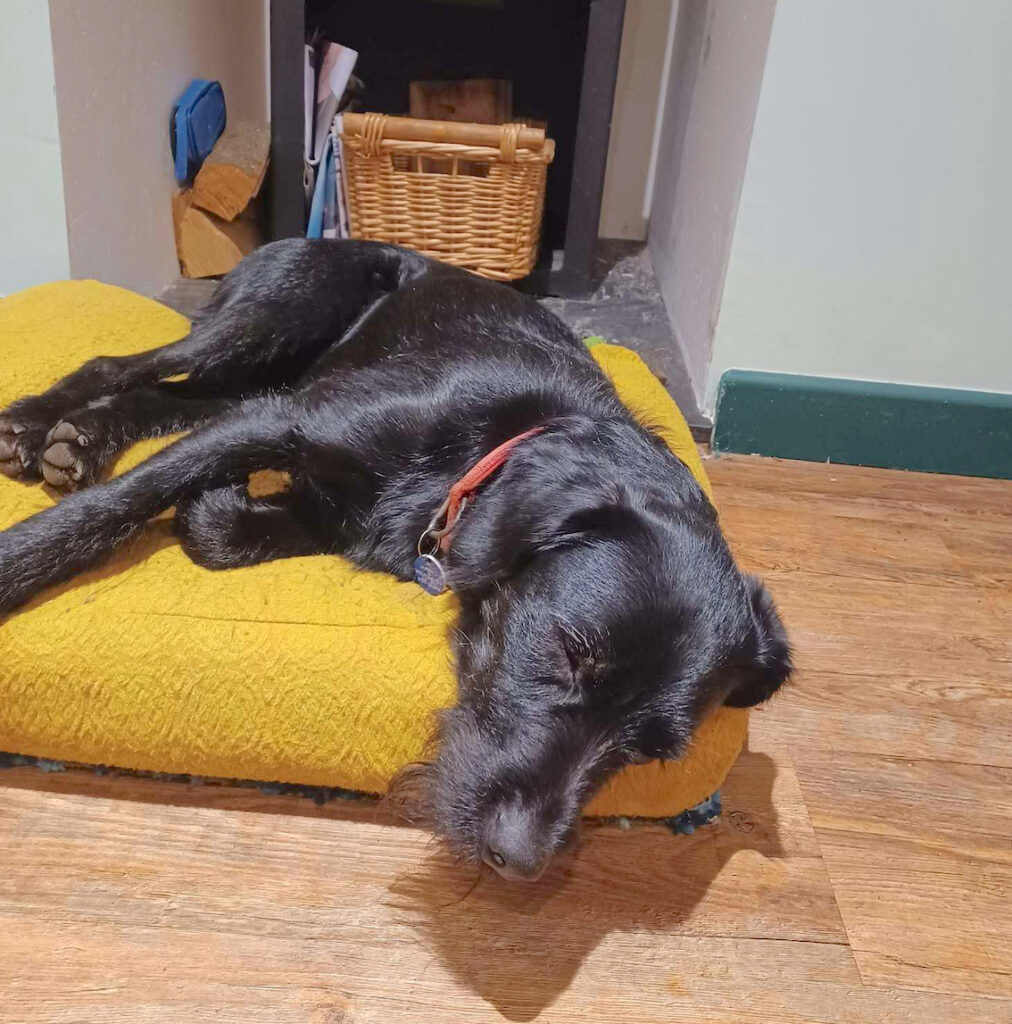
Adult Dogs:
Adult dogs will have worked out what position works for them for the best sleep; curled up, stretched out, on their side, back, belly etc. More influenced on bed type, temperature and how relaxed and comfortable they are in their environment.
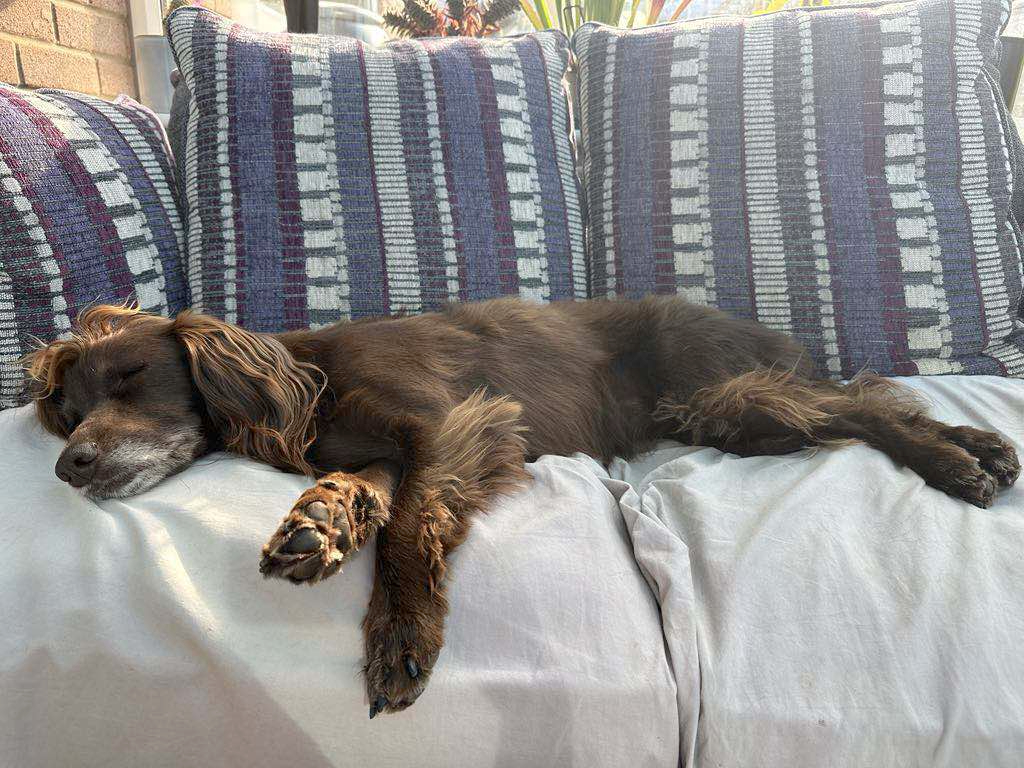
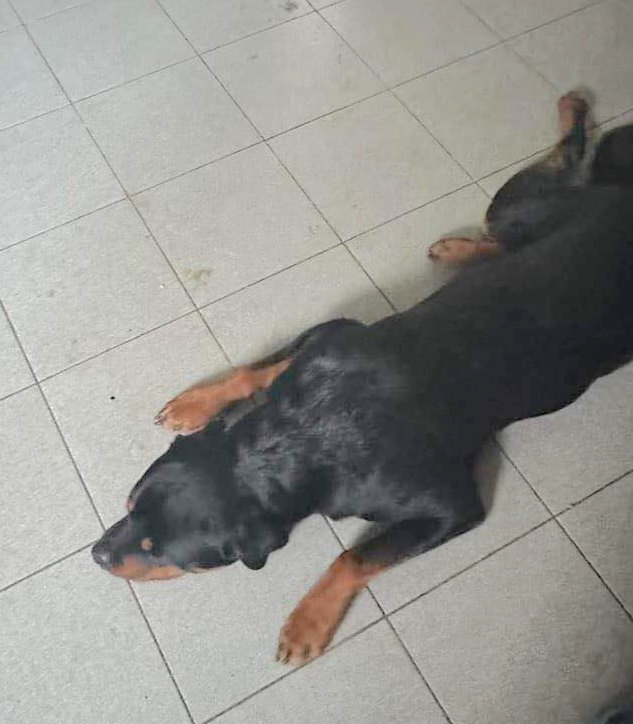
Senior / Older Dogs:
Senior dogs can start changing how they sleep and this is more to do with comfort, although sometimes a change in confidence levels affects the sleep position too. Years of wear and tear on the body starts to cause aches, stiffness, joint pain etc so older dogs will adjust their sleeping position to be more comfortable and to accommodate the bed they have.
You may find an older dog stops using their usual bed and starts sleeping on the floor or on a rug and this can be because the shape of the bed now causes them to be in an uncomfortable position (such as a circle bed if they need to lay straight) or because the bed doesn’t support the body in the way they now need.
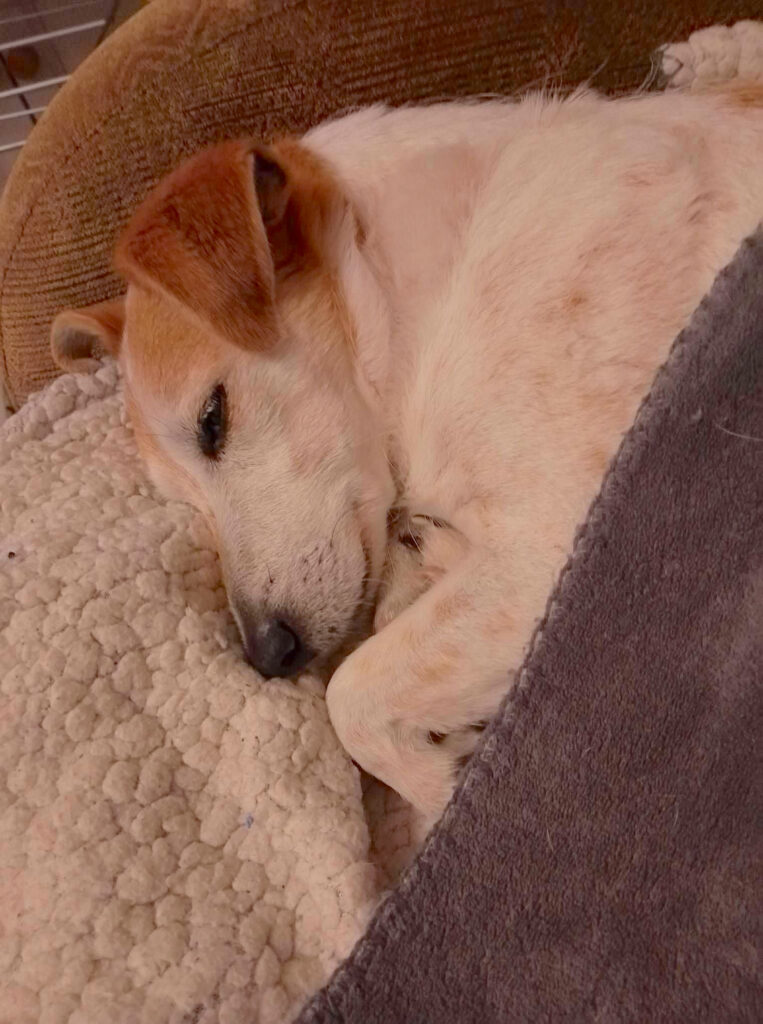
Senior dogs may feel the cold more and so curl up in a ball more then they used to. This can help them maintain body heat. Or it can be that the cold air can cause discomfort on arthritic joints so curling up helps keep these areas warm for a more restful sleep.
Dogs will adjust their sleep posture to help with their own health in general at any age:
Joints – dogs of any age can have joint issues from weakness or incorrectly formed joints to arthritis. This may mean your dog changes how they sleep throughout the night to avoid discomfort or that they lay with limbs sticking out in odd directions, lay frog style or curl up in a tight ball.

Throat / Breathing issues – dogs who sleep with their head tilted right back may just enjoy the stretch, but it can also be a sign of an underlying health issue such as throat discomfort, breathing changes or a sore neck. You would usually see other signs when the dog is awake if there is a health problem and the sleeping position would back up the other symptoms. Sometimes a dog just finds this comfortable!
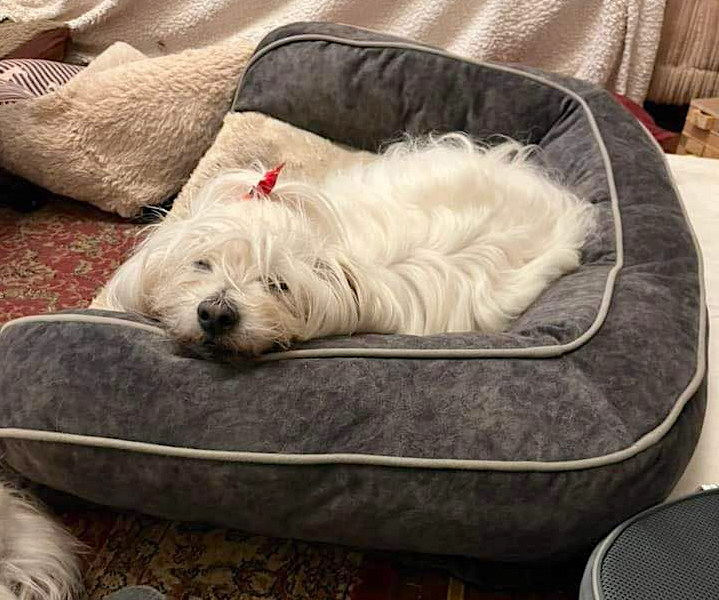
Stomach / Digestion – Stomach upsets or bigger health issues can cause dogs to change their sleeping patterns and they will move more overnight to try and get comfortable, changing positions. Sleeping curled up in a tight ball as well as laying in a praying position with chest low and rear up high can both be to alleviate stomach discomfort.
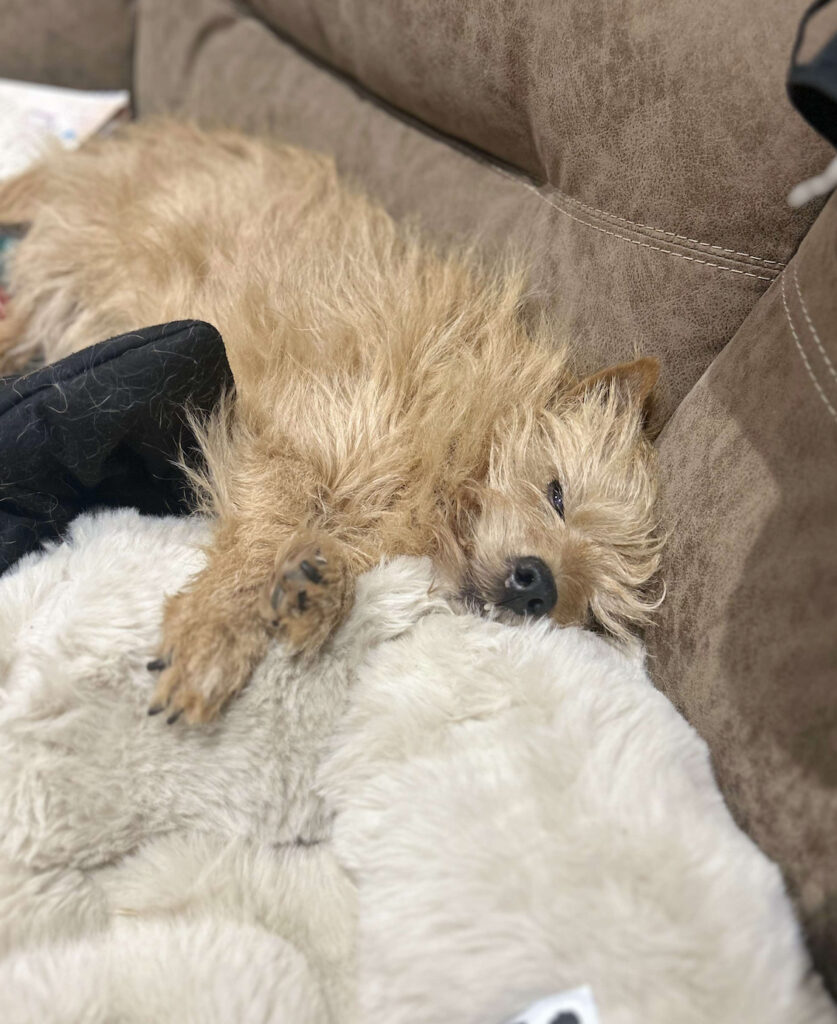
There are various sleeping positions dogs can have that have been given names and here are a few more commonly seen:
The Shrimp Position
Dogs sleeping with back legs tucked straight against their stomach and chest may start doing this if they are in a new family, moved house, in an unknown place and is thought to help dogs feel protected. It can also be a way of saving body heat so in colder months you might see your dog start to sleep like this then change again in summer.
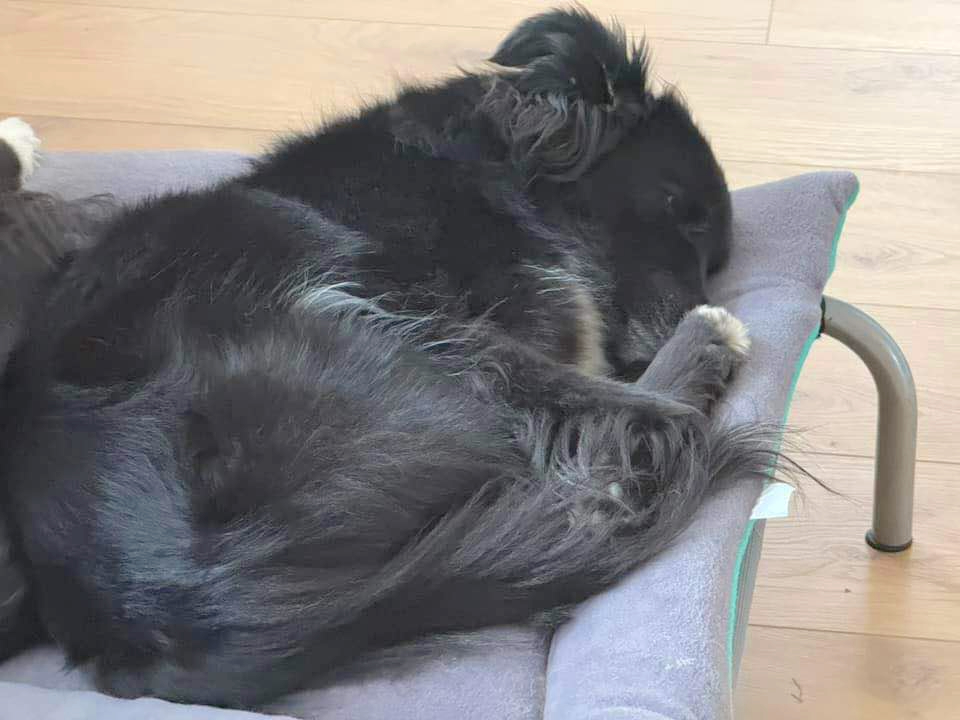
The Shrimp position can also help dogs with back or hip pain to stretch and avoid discomfort or for older dogs to find relief from arthritis in the hips, back or legs.
Lion’s Pose or Sphinx Position
This is how my Terriers often lay and sleep when lightly dozing. It’s when a dog lays straight with paws under the front of the body and chin rests on the front paws. It’s not fully restful but allows a dog to sleep and be ready for action if anything disturbs them!
The Superman Pose
This is also known as the Sploot, and is how I know it! For this dogs tend to lay on their belly with front legs stretched out on front and rear legs stretched out behind – Frog style. This can be popular with puppies while their joints are growing. It is also used with dogs who are too hot and are trying to cool down. There are also some dogs who lay like this to stretch out the hips or rear end if they have some discomfort, although there will be other recognisable symptoms as well as sleeping stretched out.
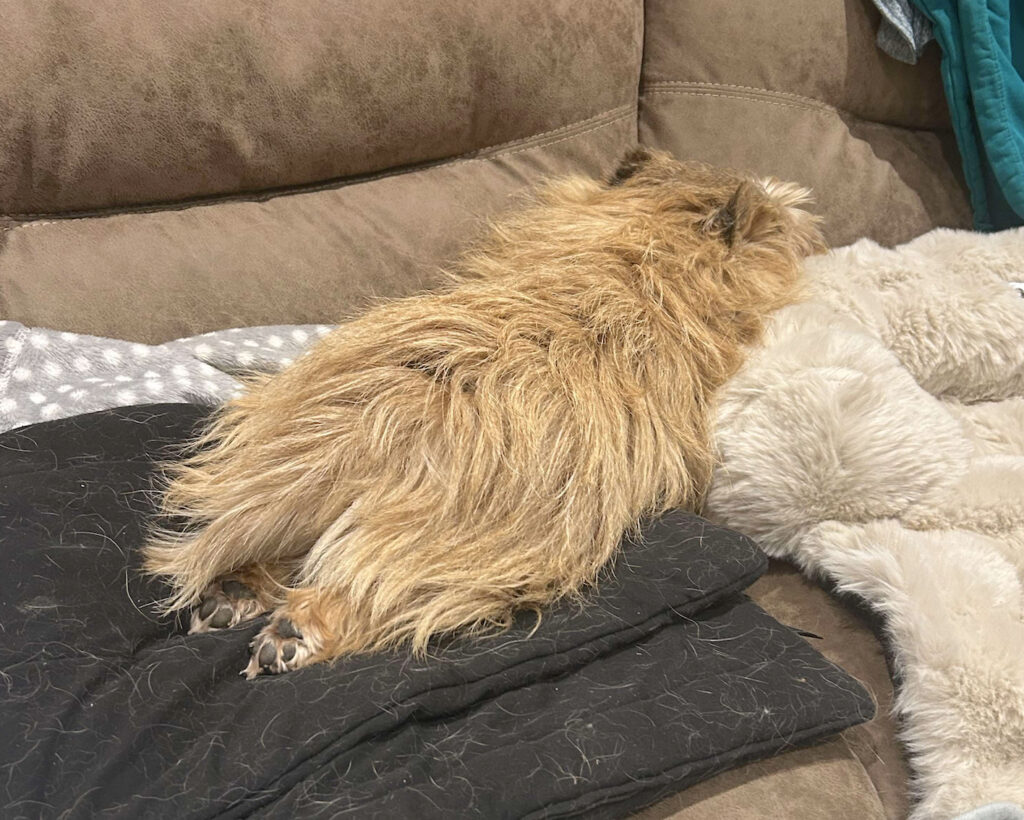
The Donut
This is when a dog is laying part on the stomach and partly on the side with the rear end curled round and the rear legs coming round to meet the front legs so the dog makes an oval or a donut. This can be due to the shape of their bed being round or oval, or can be to help keep in body heat if they are feeling the cold.
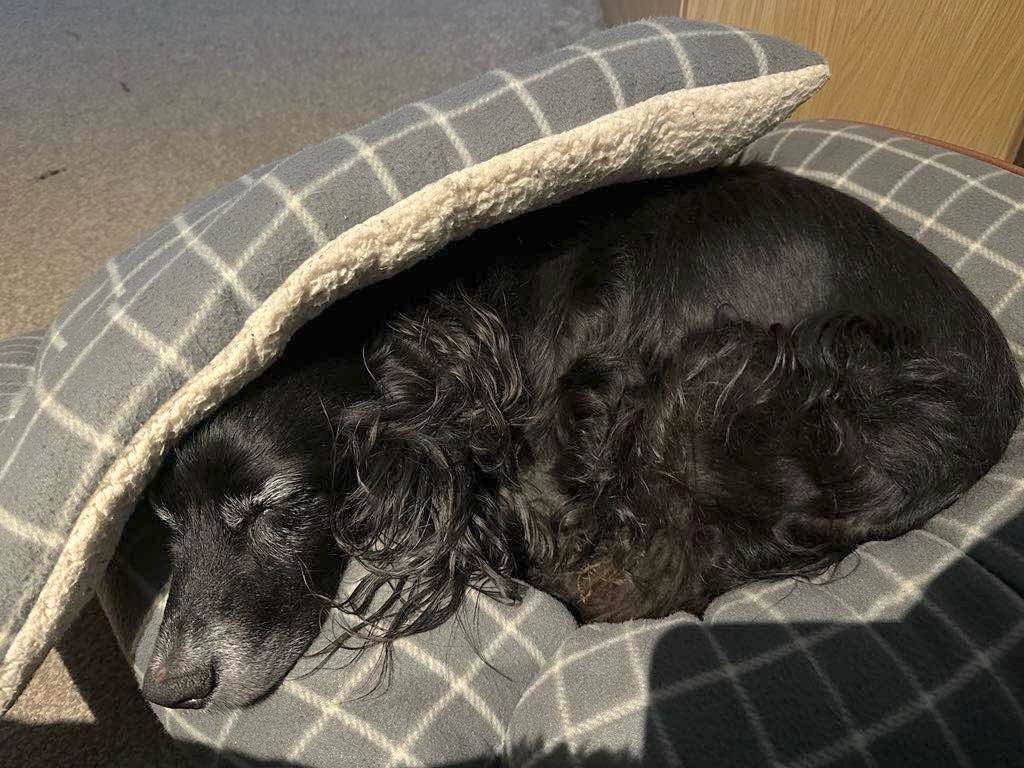
The ‘That Can’t Be Comfortable!’
Sometimes dogs will choose to sleep on their side with their neck stretched and the head right back. This looks incredibly uncomfortable but seems to be something some dogs prefer to do!
It can be a sign of a dog that is very comfortable and relaxed in their surroundings so is able to lay in a vulnerable way. Alternatively it can be a way of reliving pressure off the joints for some dogs, including (but not only) older dogs.
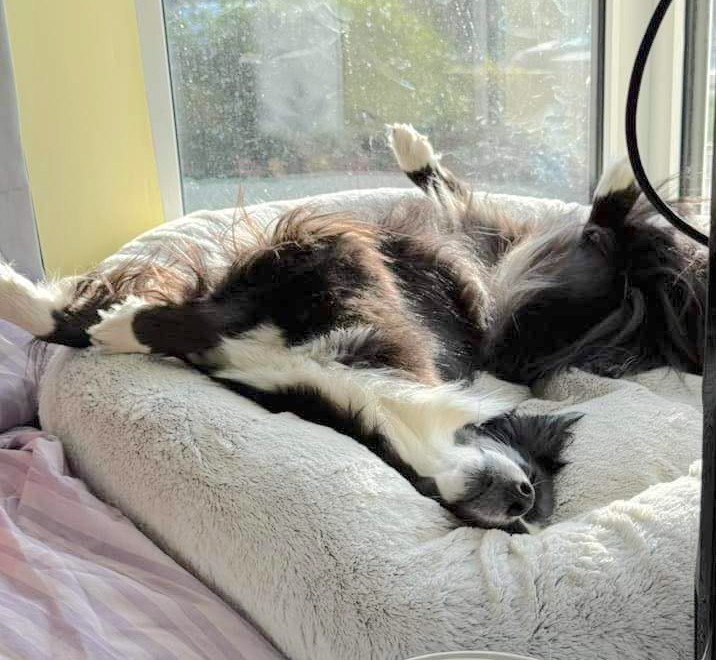
Have a look at your dog next time they are sleeping and see how they sleep, what position they are in, which bed or surface they choose to use. Our dogs are telling us information all of the time but it’s up to us to notice and understand what they are trying to say.
Look back at photos of your dog – how have they changed their sleeping positions over the weeks, months or years? Maybe they used to be shy but now their sleeping position is all confident. Perhaps you suspected your dog has a little joint discomfort as they are older but now you can see they change a lot in their sleep which confirms it more.
What we can say with certainty is that our dogs are able to give us a regular dose of cute, happy and often funny antics while they are busy sleeping!
Thankyou to everyone who supplied photos of their dogs sleeping – I loved looking at them!
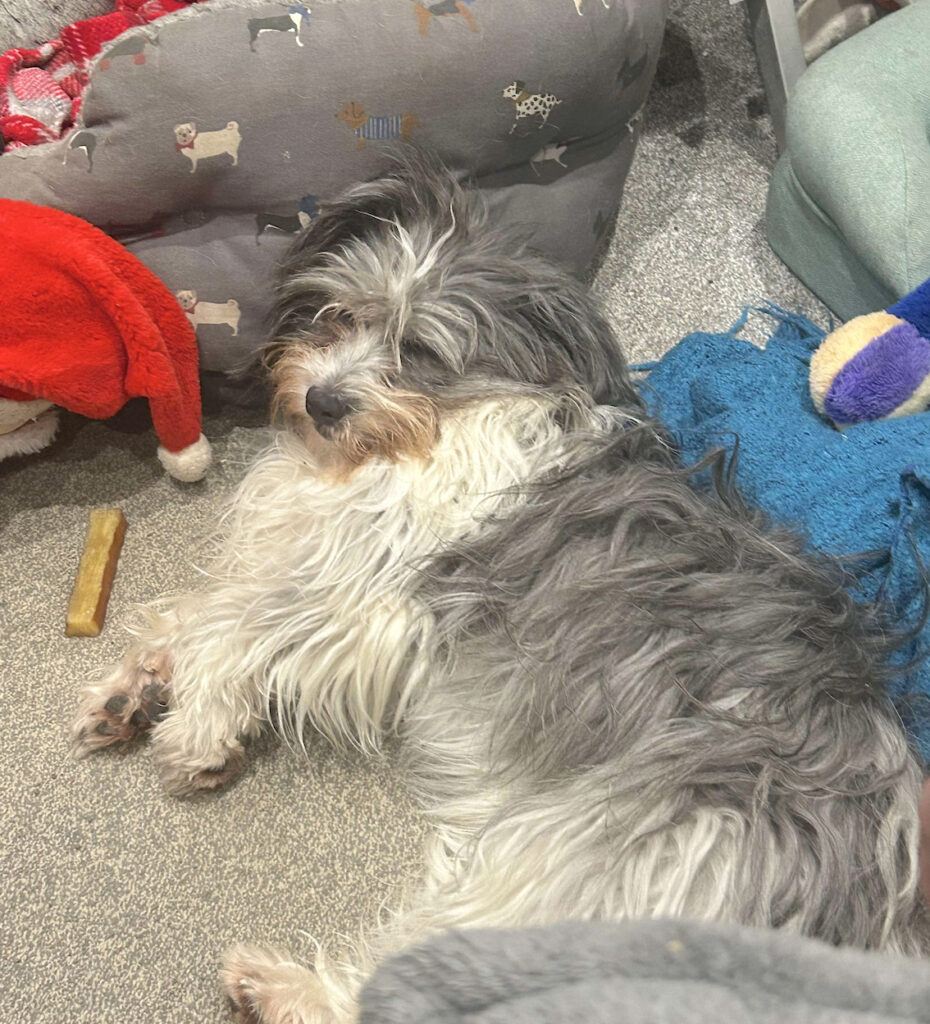
Check out our Social Media!

